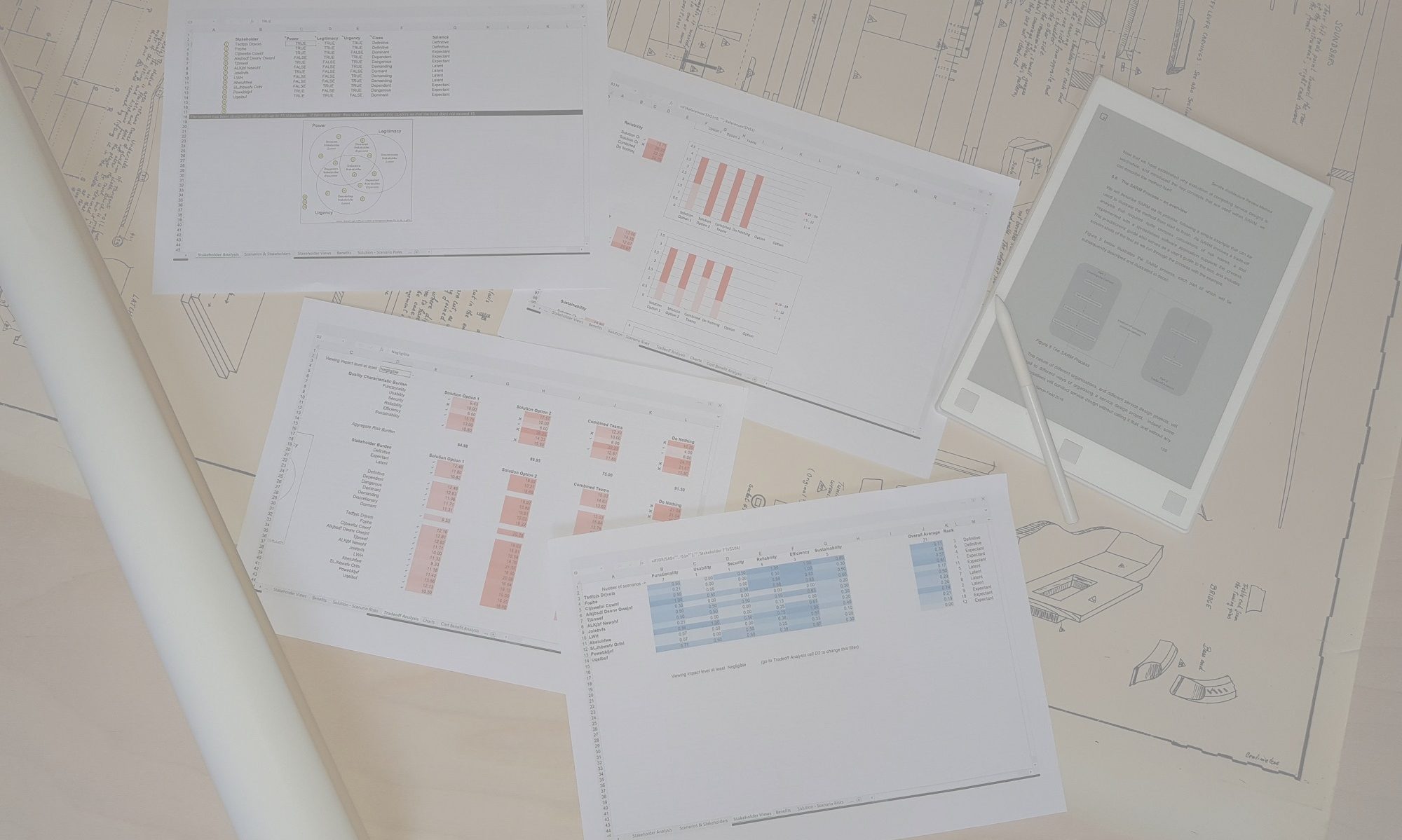The two activities of Part 2 of the SARM Process take place once you are able to describe the architecture or architectures that are the subject of the analysis. It is recommended that both activities should be conducted in the same Trade-Off Analysis workshop. Ideally, this workshop should include representatives of the key stakeholder groups, as well as those involved intimately in designing the solutions or, at least, those that have a good understanding of the solutions.
Whilst the whole SARM process can be completed in just an hour or two when analysing the architecture of an existing, well-understood system, more time is usually needed to consider a new system where more than one option is being considered. This workshop is likely to take at least 1/2 day, as this is the key workshop that conducts the trade-off analysis. It should begin with a presentation of each of the solution options that have been developed to address the business need, if there is more than one, or the existing architecture if there is just one being analysed. These may be system solution architectures, or outline service designs. It is suggested that a maximum of six competing solution options should be considered, and the SARM spreadsheet tool will not permit the inclusion of more than six.
Once all attendees have gained sufficient understanding of each solution to be able to contribute to a group assessment of their strengths and weaknesses, the facilitator needs to turn to the ‘Solution Risks’ tab of the SARM spreadsheet tool. Provided the earlier tabs have been completed, the left-hand columns will be populated with the ASRs. The immediate task for the team is to populate the matrix, assessing the risk likelihood of each solution option being able to satisfactorily achieve each requirement.
The best way to complete this activity is to read out an ASR, and then ask the team to discuss and agree a level of likelihood for each solution option in turn. The likelihood levels come from the SARM risk model, but it should be highlighted that, to make the question easy to understand, the likelihood being sought is the likelihood that a given solution will satisfactorily achieve the requirement. The options are still taken from the Likelihood section of the Risk Table, but reversed in meaning. For the subsequent trade-off analysis, the spreadsheet will automatically reverse this back so that it looks at the risk of failure, becoming the likelihood dimension as specified in the SARM Risk Model.
It is also suggested that the workshop facilitator ensures that a full discussion takes place. One of the purposes of SARM is to drive consensus among stakeholders, helping them gain greater understanding of their peers’ perspectives. In addition to completing the matrix in the spreadsheet, the discussion can often be the source of new ideas, or issues that need to be addressed, as the activity forces the team to consider all solution options from many different perspectives.
An example of the matrix, once completed, is given below:


